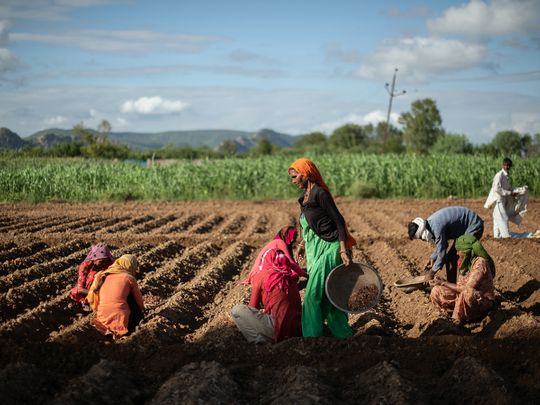
Kolkata: Arrival of the ‘kachcha’ or fresh Raidighi Hilsa, considered the best among estuarine varieties of the fish, in markets across the city and suburbs may have brought some cheer to those who can afford it but farmers in south Bengal are a worried lot.
A good catch of Hilsa in the Bay of Bengal is indication of fair weather conditions and less rainfall. However, the lack of adequate rainfall is threatening crops like paddy and jute in parts of rural Bengal.
In June this year, south Bengal districts recorded a rain deficit of 49 per cent while there was a surplus of 50 per cent in the north. Rainfall in south Bengal has been scanty so far and standing crops have begun to wither.
After the dry summer, most farmers depend on the Monsoon for sustenance. Unless the situation improves over the next few days, thousands of farmers -- many of them marginalised -- will incur heavy losses.
“In districts like Nadia and North 24-Parganas, there are hundreds of acres where jute is cultivated. As it is, the demand for jute has come down and the Minimum Support Price (MSP) is low. Unless we produce enough, there will be no earnings. All our investment and effort will go to waste. In many areas, the saplings have already started dying due to lack of water,” Nasim Ali, a farmer from Nadia said.
In districts like Burdwan, Hooghly and South 24-Parganas, the story is the same for paddy. Saplings have already been planted and have grown to a height where they require more water. Farmers gaze up to the skies every morning, hoping for a heavy downpour but meteorologists have not been able to provide much information about when this will happen.
“We need sufficient water to submerge the paddy partially. Paddy requires a lot of water. The rainfall that has taken place so far was not even sufficient to form puddles. The mango growers from this region have already taken a huge beating this year due to insufficient nor’westers in April. The nor’westers add moisture to the stems of unripe mangos and provide strength for them to ripen. This year, there was hardly any Himsagar variety of mangos that is a mainstay for many orchard owners and lessees,” said Samir Mandal, a farmer from Hooghly.
There is some cheer among fishermen in the South 24-Parganas and East Midnapore districts though. Their first foray into the Bay in search of the silver harvest (Hilsa) went to waste as the winds and tides were unfavourable. It’s ‘Bhora Kotal’ (high tide) season now and the Hilsa is returning to the sea after spawning in rivers like the Hooghly and Rupnarayan. The best Hilsa, after all, is the one without eggs.
“Good catches of Hilsa have started coming in and they have reached markets. The price has also come down now,” a trawler owner in Kakdwip said.
The Raidighi variety is now going for Rs 1,500-1,600 a kilogram (for fish weighing 900 grams to a kg). It goes up to Rs 2,000-2,200 for fish weighing 1.5 kg to 2 kg.








